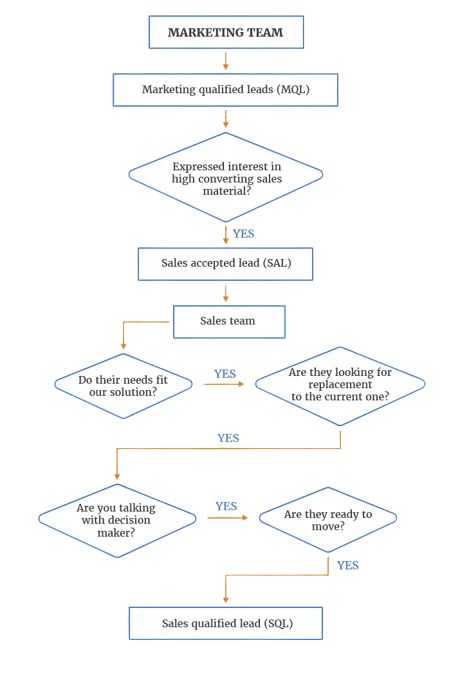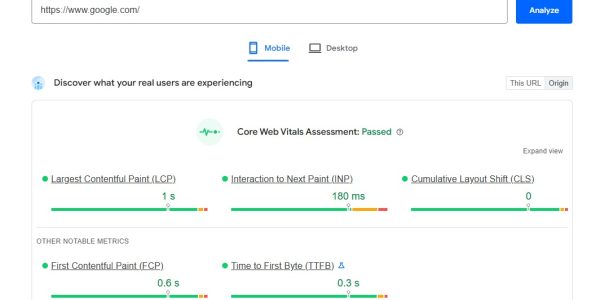Did you know that misalignment between sales and marketing teams costs B2B companies a staggering 10% of revenue or more per year? According to HubSpot or Gartner research on sales/marketing alignment stats, that friction isn’t just a minor annoyance—it’s a direct drain on your bottom line. It shows up as finger-pointing over lead quality, wasted marketing spend, and frustrated sales reps chasing dead ends. The age-old rivalry between these two critical departments has become an expensive cliché. Therefore, understanding how to align your marketing and sales teams is essential.
But what if you could transform that friction into a powerful, revenue-generating force? What if your marketing team consistently delivered high-quality leads that your sales team loved, and your sales team provided invaluable feedback that made your marketing campaigns unstoppable?
This isn’t a fantasy. It’s the result of strategic alignment. This guide provides a comprehensive roadmap for how to align your sales and marketing teams, breaking down the silos and building a unified growth engine.

Why Sales and Marketing Alignment is No Longer Optional
In today’s competitive digital landscape, the buyer’s journey is complex. A potential customer might read three blog posts, download an ebook, watch a webinar, and then finally speak to a sales representative. If the messaging, goals, and understanding of the customer are inconsistent between sales and marketing, that journey breaks down.
The High Cost of Misalignment:
- Wasted Budget: Marketing spends money generating leads that sales deems low-quality and never follows up on.
- Lost Revenue: Sales misses quotas because they don’t have a predictable pipeline of qualified leads.
- Poor Customer Experience: Prospects receive disjointed messaging, leading to confusion and a lack of trust.
- Internal Friction: A culture of blame and mistrust erodes morale and productivity.
The Powerful Benefits of “Smarketing”: When you successfully unify these teams—a concept often called “Smarketing”—the results are transformative. Companies with strong sales and marketing alignment achieve:
- Up to 38% higher sales win rates.
- 36% higher customer retention rates.
- 209% more value from their marketing efforts.
Learning how to align your sales and marketing teams isn’t just about fostering a better work environment; it’s one of the highest-leverage strategic moves your business can make.
The 5 Pillars of Successful Sales and Marketing Alignment
True alignment goes far beyond simply encouraging teams to “talk more.” It requires a foundational shift supported by shared goals, clear agreements, integrated technology, and constant communication.
Learn more about our B2B Marketing Services
Pillar 1: Shared Goals and Unified Metrics
The root of most conflict is that marketing and sales are measured by different, often conflicting, metrics. Marketing might be obsessed with generating a high volume of Marketing Qualified Leads (MQLs), while Sales only cares about closing deals and hitting a revenue quota.
The Solution: Establish a single, overarching goal that both teams are responsible for: Revenue.
- Move Beyond MQLs: While MQLs are a useful top-of-funnel metric, they shouldn’t be marketing’s North Star. The focus must shift to metrics that directly impact sales success, such as the number of Sales Qualified Leads (SQLs), sales pipeline generated, and, ultimately, closed-won revenue.
- Create a Shared Dashboard: Build a dashboard (in your CRM or a BI tool) that is visible to everyone on both teams. This should track the entire funnel, from initial website visit to the final sale. When everyone is looking at the same data, arguments are replaced with data-driven discussions.
- Key Metrics to Track Together:
- Lead-to-Customer Conversion Rate
- Marketing-Sourced Pipeline
- Marketing-Influenced Revenue
- Sales Cycle Length
- Customer Acquisition Cost (CAC)
Pillar 2: The Service Level Agreement (SLA)
An SLA is a formal, written agreement that defines the commitments each team makes to the other. It’s the constitution for your Smarketing nation, removing ambiguity and setting crystal-clear expectations.
What to Include in Your Sales and Marketing SLA:
- A Universal Definition of a “Qualified Lead”: This is the most crucial element. Sales and marketing must sit down and agree on the exact criteria that make a lead ready for sales outreach. This definition should include firmographic data (company size, industry), demographic data (job title), and behavioral data (pages visited, content downloaded).
- Marketing’s Commitment: The marketing team commits to delivering a specific number of qualified leads to the sales team each month or quarter.
- Sales’ Commitment: The sales team commits to the speed and depth of their follow-up for every qualified lead. For example, sales agrees to make at least 5 contact attempts within 48 hours for every lead marketing delivers.
This two-way accountability ensures that marketing is focused on quality, not just quantity, and that valuable, hard-won leads never fall through the cracks.

Pillar 3: A Single Source of Truth via an Integrated Tech Stack
Your data and technology can either be a wall that divides your teams or a bridge that connects them. Without integrated systems, crucial information gets lost, and collaboration becomes impossible.
- The CRM is King: Your Customer Relationship Management (CRM) system (like Salesforce or HubSpot) must be the central hub for all customer and lead data. Sales lives in the CRM, so marketing must ensure all lead intelligence is passed into it seamlessly.
- Marketing Automation is the Engine: A marketing automation platform (like Marketo, Pardot, or HubSpot) tracks lead behavior, scores leads based on engagement, and nurtures them with relevant content.
- The Magic of Integration: When your CRM and marketing automation platform are tightly integrated, magic happens. A salesperson can see the exact blog posts a lead read, the emails they opened, and the webinars they attended before they even pick up the phone. This context is gold.
At Infineural Technologies, we specialize in architecting and integrating these complex tech stacks. We build data pipelines that ensure information flows effortlessly between marketing and sales, providing the 360-degree customer view needed for true alignment. This removes the technical headaches so your teams can focus on what they do best.
Pillar 4: Constant Communication and Feedback Loops
An SLA and integrated tech are foundational, but alignment thrives on human interaction. You must create formal and informal channels for regular, structured communication.
- The Weekly “Smarketing” Meeting: This is non-negotiable. Get key players from both teams in a room (or on a call) every week.
- Agenda: Review the shared dashboard, discuss lead quality, highlight recent wins, and troubleshoot campaigns that aren’t performing.
- Rule: This is a blame-free zone focused on collaborative problem-solving.
- Involve Sales in Campaign Planning: Before marketing launches a major campaign, they should present the plan to the sales team. Sales can provide on-the-ground feedback about customer pain points and objections that will make the campaign messaging much more effective.
- Share the “Why” Behind Closed-Lost Deals: When sales loses a deal, the reason codes in the CRM should be detailed. Was it price? A missing feature? A competitor? Marketing can use this invaluable feedback to adjust its messaging, create new content addressing these objections, and better qualify future leads.
Pillar 5: Building a Unified Customer Journey Together
Both teams must have a shared understanding of the entire customer journey, from the first touchpoint to the final signature and beyond.
- Jointly Map the Funnel: Get out a whiteboard and map every stage of the funnel together. Define what happens at each stage, who is responsible, and what content or resources are needed to move a prospect to the next stage.
- Collaborate on Content Creation: Salespeople are a goldmine of content ideas. They hear the same questions, objections, and pain points from prospects every single day. Marketing should regularly interview the sales team to generate ideas for blog posts, case studies, and sales enablement materials that will actually help close deals.
- Sales Enablement is a Team Sport: Creating battle cards, one-pagers, and presentation decks shouldn’t happen in a vacuum. When marketing creates these assets with direct input from sales, the adoption rate skyrockets, and reps feel empowered with tools they actually want to use.
Your Action Plan: How to Align Your Sales and Marketing Teams Today
Feeling motivated? Here’s a step-by-step plan to get started.
- Secure Executive Buy-In: Present the business case (using stats from this article!) to leadership. Alignment must be a top-down initiative.
- Host a Kickoff Workshop: Get both teams together for a half-day workshop. Use this time to establish shared revenue goals and begin drafting your universal lead definition.
- Draft Your SLA: Formalize the agreements from the workshop into your first Service Level Agreement. Remember, it can be an evolving document.
- Audit Your Tech Stack: Analyze how data flows (or doesn’t flow) between your key systems. Identify gaps and create a plan to integrate them. Contact us for a tech stack audit
- Schedule Your Smarketing Meetings: Put a recurring weekly meeting on the calendar and protect that time fiercely.
From Silos to Synergy: Build Your Revenue Engine
Aligning sales and marketing isn’t a one-time project; it’s a cultural shift toward shared ownership of your company’s growth. By demolishing the silos and building bridges with shared goals, clear agreements, and open communication, you stop the internal tug-of-war and create a single, powerful engine designed for one purpose: driving revenue. The process requires effort, but the payoff is a more efficient, profitable, and collaborative organization.
Ready to break down the barriers between your teams and unlock your true growth potential? The journey to alignment can be complex, but you don’t have to do it alone.
The experts at Infineural Technologies can help you develop the strategy, integrate the technology, and foster the culture needed for lasting sales and marketing synergy. Contact us today for a free alignment consultation and start building your unstoppable revenue engine.


